Wondering “how many outlets can be on a 20 amp circuit?”
If so, you’re in the right place.
Our complete guide explains the basic system, how many amps you can put on it, and when to call a pro.
We partnered with Networx to help you find local electricians. Click to below to get a FREE quote.
How Many Outlets on a 20 Amp Circuit?
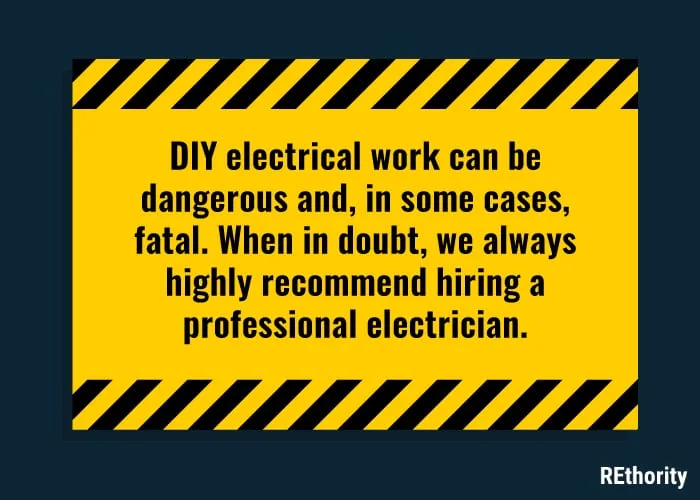
If you’re remodeling or having a new home or electrical installation inspected, you may be wondering how many outlets can be put on a 20 amp circuit.
Find the answer, other vital things to consider, and tips on finding a professional to ensure your home complies with local and national electrical codes here in our guide.
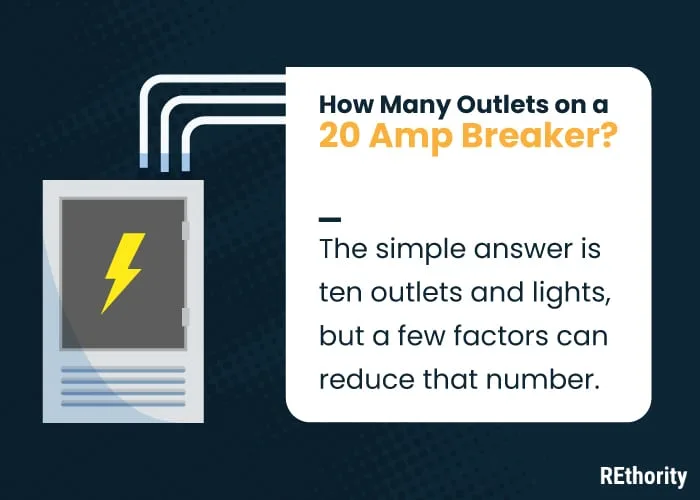
How many outlets can be put on a 20 amp circuit safely?
A rule of thumb is to factor a maximum draw of 1.5 amps into each receptacle, which means you can put 10 outlets on a 20-amp circuit.
But a few things affect that number. To explain the reason behind these limits, we need to start with the circuit itself and what its purpose is in your home.
What Is a 20 Amp Circuit?
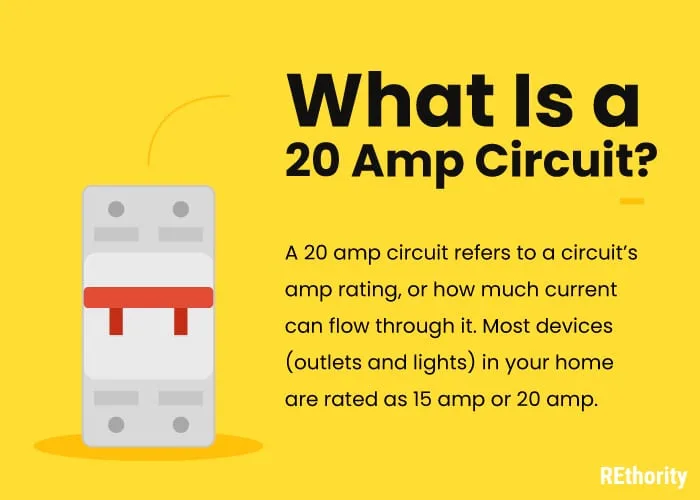
In a 20 amp circuit, “20 amp” refers to its amp rating, or how much current can flow through it. Most devices (outlets and lights) in your home are rated at 15 amp or 20 amp.
This tells you how much current can safely flow through them because amps (amperes) are the unit of measurement for current. The amp rating of a circuit is related to the wire sizes used in the circuit.
What It Does
It also considers the amp rating of the circuit breaker connected to it. It also gives guidance on how many outlets (receptacles) can be installed on the circuit without overloading it.
A 20 amp circuit is always connected to 10 gauge or 12 gauge wire. There is a smaller gauge, 14 gauge, that can only carry up to 15 amps of current. If you’re using a 20 amp circuit, you need at least 12 gauge wiring.
If you were to use 14 gauge wiring on a circuit that carries 20 amps of current, you would overload the circuit and potentially cause a fire, overheat the wires, or a power surge.
Maximum Current Flow
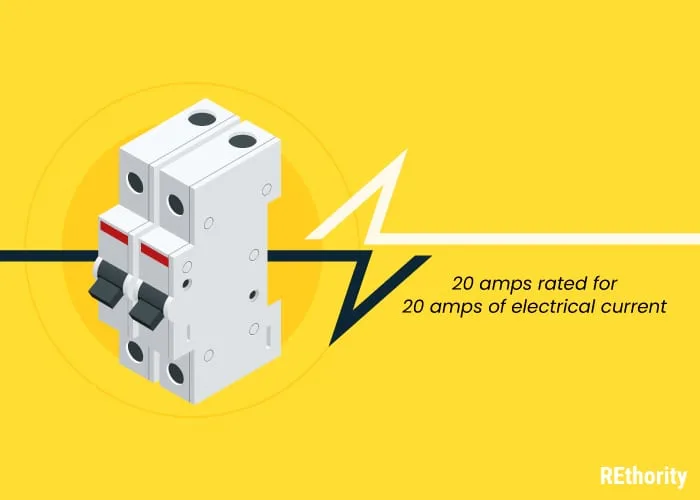
When you see the amp rating of a circuit (such as a 20 amp circuit), this doesn’t mean that there are constantly 20 amps of current flowing through it. It means this is the maximum amount of current that the circuit can safely handle.
You may have outlets throughout your home that are part of a 20 amp circuit, but you never even get close to using that much current (like lamps and coffee makers).
This doesn’t pose any safety issues, but plugging in a large appliance or tool that needs a 20 amp circuit, like microwaves or power saws, can overload a lesser circuit (like 15 amp circuits) with a power surge and “trip” the circuit breaker.
What Is a 20 Amp Circuit Breaker?
If you’ve ever had to manually turn off a circuit with the breaker in an electrical panel, you might be familiar with the simple function of these safety devices: They stop the flow of power in emergencies.
Remember that amps (technically called amperes) are the unit of measurement for electrical current. An electrical current flows through a circuit (in this case, let’s say it’s a 20 amp circuit).
As this happens, the circuit breaker electrically “senses” if the current can be handled and automatically shut off to stop the flow of power if it’s too much.
Prevents Fires
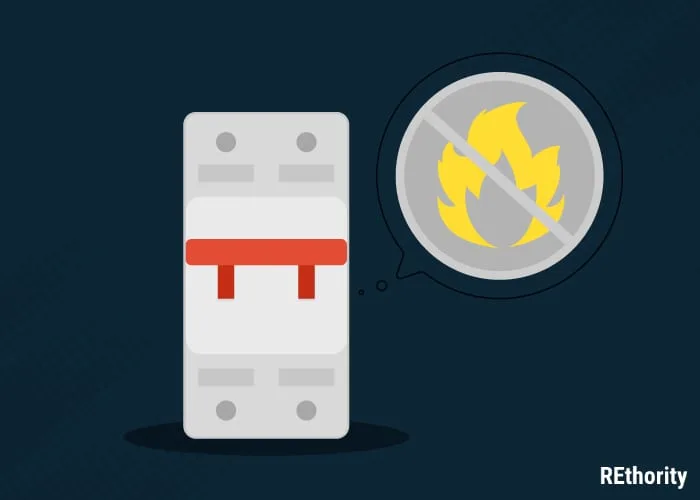
This prevents fires, power surges, and overheated wires. If you’re using kitchen appliances that are too large or consistently drawing too much power on a 20 amp circuit, you will overload the breaker (and fail to pass an electrical inspection).
When you consider that every circuit is designed to handle a limited load (20 amps of current in the case of a 20 amp circuit breaker), it’s easier to see why circuit breakers are necessary.
How Many Outlets Can Be Put on a 20 Amp Circuit?
As noted above, the generally accepted number of outlets you can put on a 20 amp circuit is 10. But how do you determine the number of outlets that can be safely installed on a 20 amp circuit?
First, you have to start with the amount of current, or number of amps, all of the “devices” (lights or outlets) on the circuit will draw.
Calculating How Many Outlets on a 20 Amp Circuit
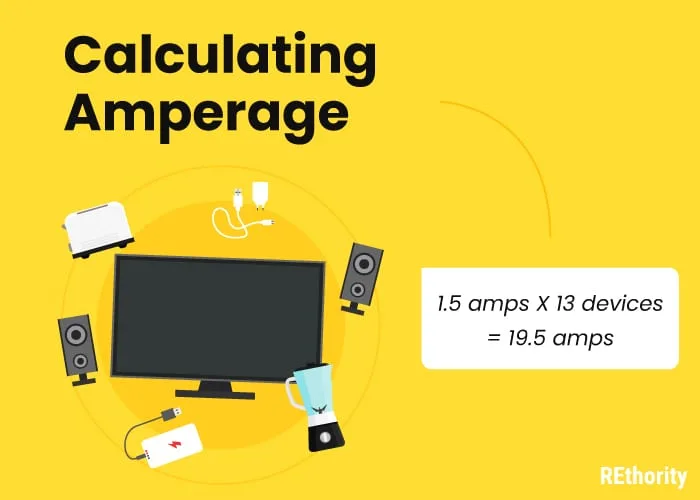
A general rule is that each device on a circuit will draw about 1.5 amps. If you’re figuring the number of outlets for a 20 amp circuit, it’s natural to try to calculate it this way:
1.5 amps X 13 devices = 19.5 amps
The result of 19.5 amps is under 20 amps, so that should be safe, right? That’s not the case. The National Electrical Code doesn’t put a number limit on the outlets you can install on a 20 amp circuit.
Devices on a 20 Amp Circuit
Why? Because not all the outlets will be used (drawing power). However, they do put a limit on the maximum power load a circuit and its breaker should carry – no more than 80% of its rating.
This means a 20 amp circuit should only carry 16 amps at maximum – or about ten devices.
1.5 amps X 10 devices = 15 amps
Why? The reason for the 80% rule is that some appliances and tools cause a temporary surge of power when they start up (air conditioners and power tools are examples).
If you’re only using 80% of the total load for a circuit, the remaining 20% can handle that temporary power surge without causing problems.
What Are 20 Amp Circuits and Switches?
The receptacles in a circuit are your outlets. The switches control the flow of current to an outlet, but they can only control a certain amount of current (most are rated for 15 amps).
Your outlets and switches not only need to follow your local and national electrical codes in terms of how many can be installed on a circuit, but also in terms of what devices can be plugged into them.
Both 15 amp and 20 amp outlets are typical in houses, but the difference is important. You can’t plug a 20 amp device or appliance into a 15 amp outlet.
But you can plug smaller electrical items like lamps and phone chargers into them. On the other hand, you can plug a 15 amp device into a 20 amp outlet because it won’t overload the circuit.
15 vs 20 Amp Outlets
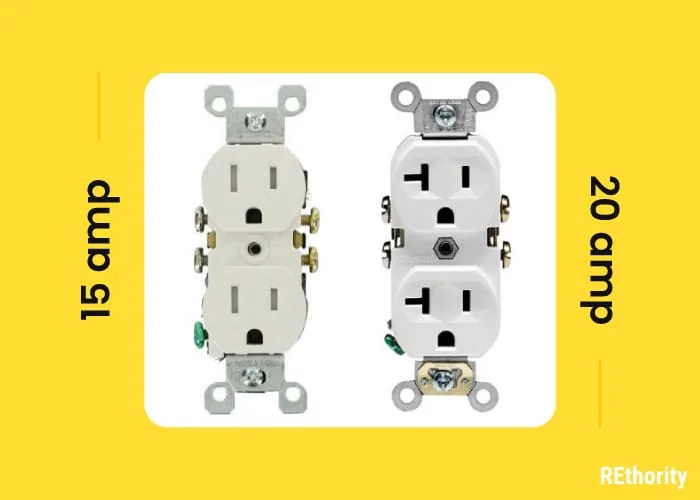
It draws less current than the 20 amp outlet is rated for. Light switches are usually rated for 15 amps, which means they can control up to 15 amps of current by switching on or off.
How can you tell the difference between a 20 amp outlet and a 15 amp outlet? All 20 amp-rated outlets have a small, T-shaped slot on one side, while 15 amp outlets do not.
The T-shaped slots allow 20 amp plugs or standard 15 amp plugs to fit. Electrical plugs rated as 20 amps won’t fit into 15 amp outlets.
Do You Need a 20 Amp Circuit?
We’ve discussed 15 and 20 amp circuits, so you may be wondering if you need the additional current-carrying capacity of a 20 amp circuit. Most households have either a 15 or 20 amp circuit breaker.
This is the safety buffer in case too much power is flowing through your existing electrical wires). In most cases, it’s better to err on the side of caution and make sure you have a 20 amp circuit breaker.
If you’re trying to get an idea of the work that will need to be done by a professional and what size circuit breaker your home needs, you can take a look at the wire size on the cable you want to connect to the circuit breaker.
Leave It to a Pro
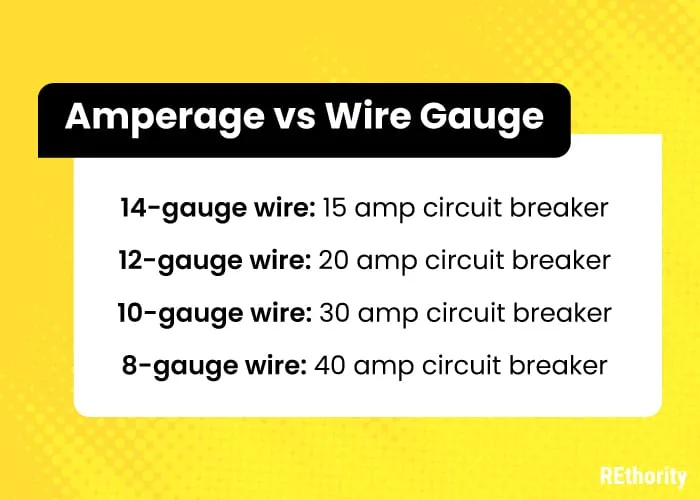
Remember, you’re just taking a look – don’t attempt to do electrical work on your own unless you are fully trained and capable.
Each cable has two numbers listed with a dash separating them. The first number is the wire gauge, and the second is the number of wires inside the cable.
To know what size circuit breaker will be necessary for that appliance or device, compare the first number (the wire gauge) you see with the list below:
- 14-gauge wire: 15 amp circuit breaker
- 12-gauge wire: 20 amp circuit breaker
- 10-gauge wire: 30 amp circuit breaker
- 8-gauge wire: 40 amp circuit breaker
If the wire gauge is 12 or 14, you can use a 20 amp circuit breaker. But if you see a wire gauge that reads 10 or 8 (meaning it is thicker and composed of more current-carrying wires), a 20 amp circuit breaker won’t be enough.
In most homes in the United States, you won’t need more than a 20 amp circuit breaker, but your electrician can advise you if you may need the capacity for more current at your home.
We partnered with Networx to help you find local electricians. Click to below to get a FREE quote.
How Many Outlets on a 20 Amp Circuit?
If you’re not a licensed electrician, you may not realize how much thought and calculation goes into the circuitry and wiring of your home. Electricity is a powerful force and capable of causing a lot of damage.
If the wiring is faulty, not rated for the amount of current flowing through, or improperly connected, you can start a fire. Circuit breakers are essential safety devices and are there to protect you and your home.
When to Call a Pro

Don’t take responsibility for any electrical work you’re not fully experienced with. Whether you’re remodeling or preparing a newly constructed home for inspections, it’s always best to call a professional.
The number of outlets that can be put on a 20 amp circuit should be carefully considered, along with any local codes that might supersede the National Electrical Code.
Any licensed professional you hire will have this information and make sure everything is installed and connected in full compliance with both local and national codes.
Is It Worth Upgrading the Circuit Breaker?
We understand that you are wondering if you should upgrade your circuit breaker. Of course, you want to perform as well as possible and hone your technique. But the question of upgrading may not be easy. There are a few simple steps to help you make the right decision.
Start by finding out how long you’ve had this breaker. If it’s many years old and you use it frequently, it’s likely tripped due to circuit overload. If so, we have to disappoint you. You need to upgrade it. You will reduce the circuit overload with an upgraded circuit breaker.
You may also need an upgraded circuit breaker if its rating is lower than the rating of the outlet needed.
If you have 15 amp outlets and a 20 amp breaker is needed, for instance, you need to upgrade the circuit breaker. And if the current breaker is only capable of handling 15 amps.
All in all, you should take upgrading circuit breakers seriously. By investing in an upgraded circuit breaker now, you can be sure that you have done everything possible to prevent future electrical failures.
This job is also best done by a professional with electrical wiring experience. It is crucial to understand how many outlets there can be on a 20-amp circuit. Only then can you upgrade your existing system. Then your home will be safe and up to code.
You can use the suggestions above. It will give you a better understanding of how electricity works in your home. You will understand which circuit breakers you will need.
But remember one thing. If you need to be more knowledgeable or reassured, it’s best to trust a professional. A certified electrician will be equipped with all the knowledge required to upgrade your circuit breaker.
So don’t hesitate to contact them with any questions or electrical projects. This way, you will be sure that everything will be done correctly and safely. And don’t hesitate to ask questions. You need to know everything that’s going on in your house.


